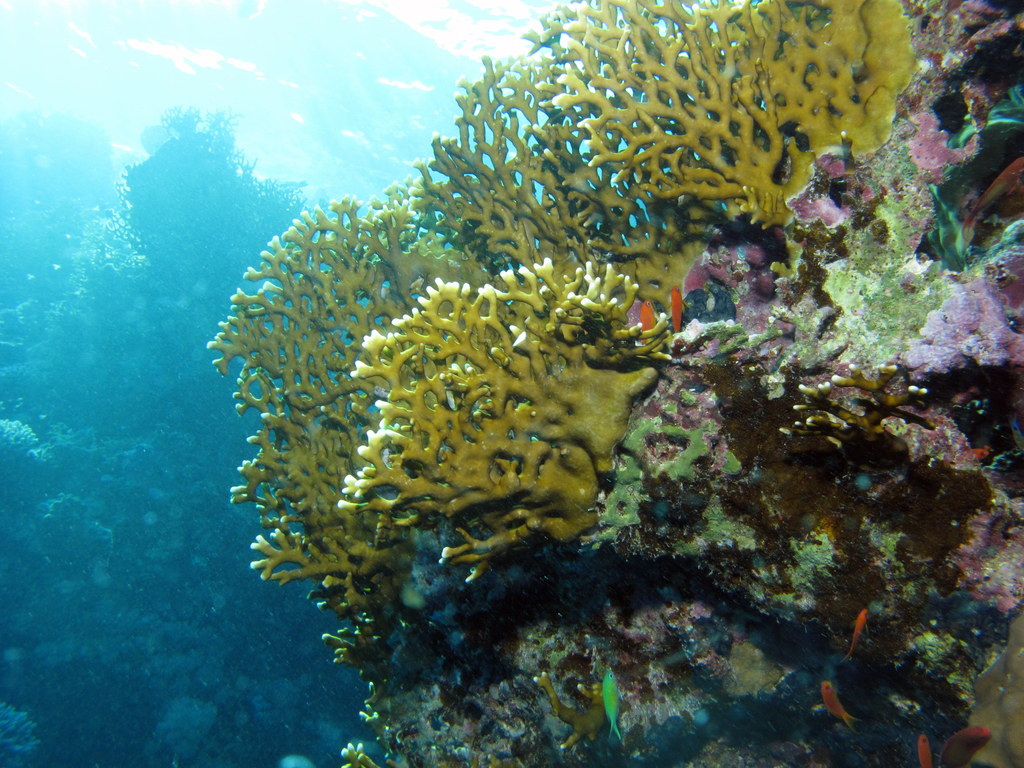

Other corals around the world don’t typically possess the same biological ability to persist. So far, the team has tested about 20 different species of Red Sea corals in the Gulf of Aqaba and found them much more tolerant of increased temperature. All can be controlled remotely, allowing researchers to monitor them and make adjustments from wherever they are in the world – particularly important given that obtaining a visa to work in Israel is not always easy for some researchers. These could be particular phases of reduced pollution in the water, or periods of relief from overfishing. Of particular interest, Kleinhaus says, are any important ecological factors in the reefs that “amplify any innate coral resilience or potential to recover from bleaching”. “But unless we uncover what exactly happens biologically in the corals of the Gulf of Aqaba that allows them to withstand warming temperatures, we don't know how or if this knowledge can be applied elsewhere.” We have a small window of opportunity remaining to apply science to rescue the world's degrading reefs,” says Karine Kleinhaus, a professor in the School of Marine and Atmospheric Sciences at Stony Brook University. “Coral reefs are biodiversity reservoirs and significant sources of food, income, and pharmaceuticals. Multiple aquariums mean that more researchers can run experiments simultaneously, in the hope to better understand the physiology and genetics of the reef ecosystems. With this system at the Gulf of Aqaba, the team is able to study corals and water from the Gulf, and adjust the acidity and temperature in the tanks according to their experiments. But what he found in the Gulf of Aqaba were corals apparently unaffected by ocean acidification and the steadily warming waters. Fine expected to see more degrading reefs of the kind he was used to there. Maoz Fine, a Bar-Ilan University professor who leads this lab, first noticed that there was something distinctly different about the Red Sea reefs when he returned home to Israel in 2005 after researching reefs in Australia. “Despite sea temperatures rising faster than the global average rate, no mass bleaching events have occurred in the northern Red Sea,” says Jessica Bellworthy, a dive guide and tropical coral doctoral student at Bar-Ilan University, who works in the coral research lab at the Interuniversity Institute for Marine Sciences on the Gulf of Aqaba in Eilat, Israel. Why and how does Future Planet count carbon?Ĭoral reefs in the Gulf of Aqaba appear to be “content” with the increasing temperatures, says Anders Meibom, a geochemist running the Laboratory for Biological Geochemistry at the Ecole Polytechnique Fédérale de Lausanne (EPFL) and the University of Lausanne's Institute of Earth Sciences in Switzerland.Ten simple ways to act on climate change.
#Red sea coral reef how to#
How to clear the oil spills of the Amazon rainforest.Yet, at the northern end of the Red Sea in the Gulf of Aqaba there is a ray – or, rather, reef – of hope. “The models are projecting catastrophic losses in reefs by the end of this century.” Indeed, the majority of the world’s coral reefs are predicted to die by the end of this century, if not sooner. Grottoli’s research is focused primarily on the effects of climate change on coral reefs and what it is that makes some corals more resilient than others. “As we see the frequency and intensity of mass bleaching events increasing, the situation is becoming more dire,” says Andréa Grottoli, a professor in the School of Earth Sciences at Ohio State University. Those that don’t recover, die – and their ecosystem can collapse with them. More frequent bleaching events mean less time for the corals to bounce back. Recovery from bleaching can be possible, but it’s not guaranteed. Without these symbiotic algae, the coral loses its colour and appears white. In the period from 2014 to 2017, about 75% of the planet’s tropical coral reefs suffered heat-induced bleaching during a global ocean heatwave.Ī “bleached” coral is a stressed-out coral that, when triggered by environmental changes such as pollution and warming waters, has evicted its beneficial, energy-producing algae. Massive coral bleaching events are becoming more common around the world, as a result of the rapid pace of climate change.

Images of white, skeletal coral reefs are becoming an increasingly bleak, if familiar sight.


 0 kommentar(er)
0 kommentar(er)
